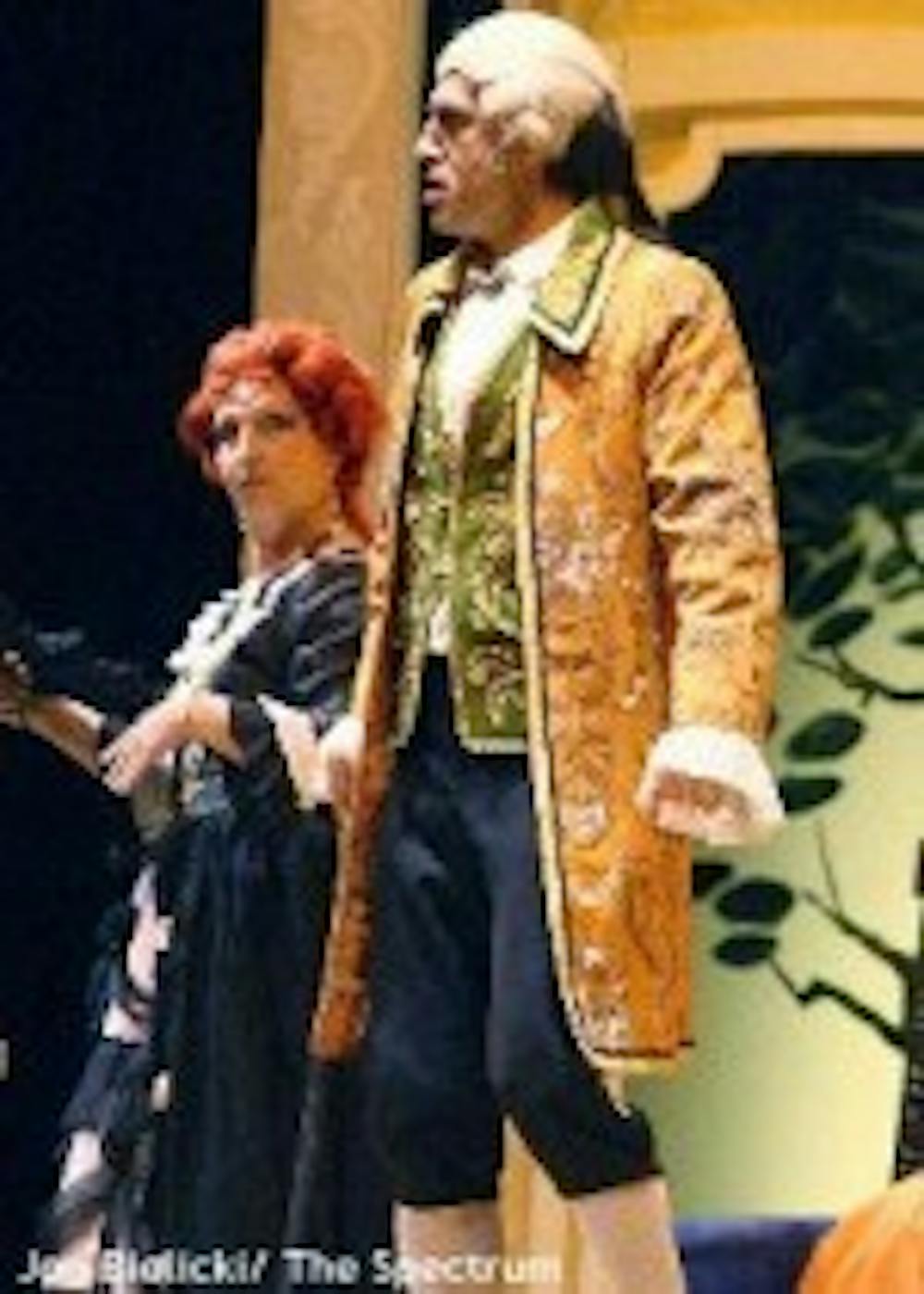The aroma of white zinfandel permeated the halls of UB's Center for the Arts on Tuesday night, announcing the arrival of Mozart's "The Marriage of Figaro," an opera buffa (comic opera) performed by the Bulgarian State Opera.
While simple in structure, the opening stage was almost blinding in its colorful ambiance. Keeping with the humble tone, the costumes and period pieces were convincing, but not overly ostentatious. The set was more than enough to make it plausible for the audience to travel back 200 years. Maestro Kostova's fervent motions danced along with the notes and could be seen from the back wall of the orchestra pit, moving as gracefully as the actors onstage.
"The Marriage of Figaro" tells a tale which has grown almost commonplace in the television soap opera world. Figaro, a valet in a rich Count's household, is planning to marry Suzanna, the servant to the Countess. The Count makes amorous advances toward Suzanna, and intends on acting upon his feudal right to bed her before her husband does.
The plot twists and turns with mistaken identities and cross-dressing, primarily on the part of Cherubino, a young male page, played brilliantly by Petya Tsoneva, a woman. With so many plot turns, it is liable to make one dizzy.
The first aria performed by Figaro (Ivaylo Dzhurov) that truly stands out is "Se Vuol Ballare," or "If You Want to Dance." Dzhurov's clear baritone voice rang out so loud that he barely needed a microphone.
Suzanna, (Mariya Tsvetkova) played her role immaculately. She was stubborn and sweet, playful and strong, all at the same time. Tsvetkova's voice was by far the best in "The Marriage of Figaro," especially when paired with her rival Marcellina (Daniela Dimitrova) or the Countess Rosalina (Noboru Aomori). The first interaction between Marcellina and Suzanna is vaguely reminiscent of a restrained episode of Jerry Springer, with two romantic rivals exchanging "civil" insults.
The role of Cherubino seemed to be a difficult one to carry off for Petya Tsoneva, primarily because audiences in 2007 are less willing to suspend their disbelief without some prodding. Eventually, the audience seemed to forget the actress behind the page, possibly at the point of Cherubino's love aria to the Countess, "Voi, che sapete che cosa ?(c) amor," or "You ladies who know what love is, see if I have it in my heart," which is probably the most well known from the opera, and was delivered convincingly from Tsoneva.
Compared to the films and plays that our generation has become accustomed to, "The Marriage of Figaro" ran a little long, leaving the younger patrons fidgeting in their seats.
The actors in the Bulgarian State Opera production of "The Marriage of Figaro" were truly astounding, not only for their talent, but also for the sheer fact that they carried off a comedic opera from 1786, and kept the audience roaring with laughter. This was Mozart's gift, though, as has been witnessed through almost every other piece composed.
Mozart's music and talent transcends the centuries, and is as applicable and relatable today as it was 221 years ago. Who knew cross-dressing was so last century?
The curtain fell on the characters celebrating their love rekindled or reinforced, and the opera ended with the echoes of those same sentiments. "Bravo!"





